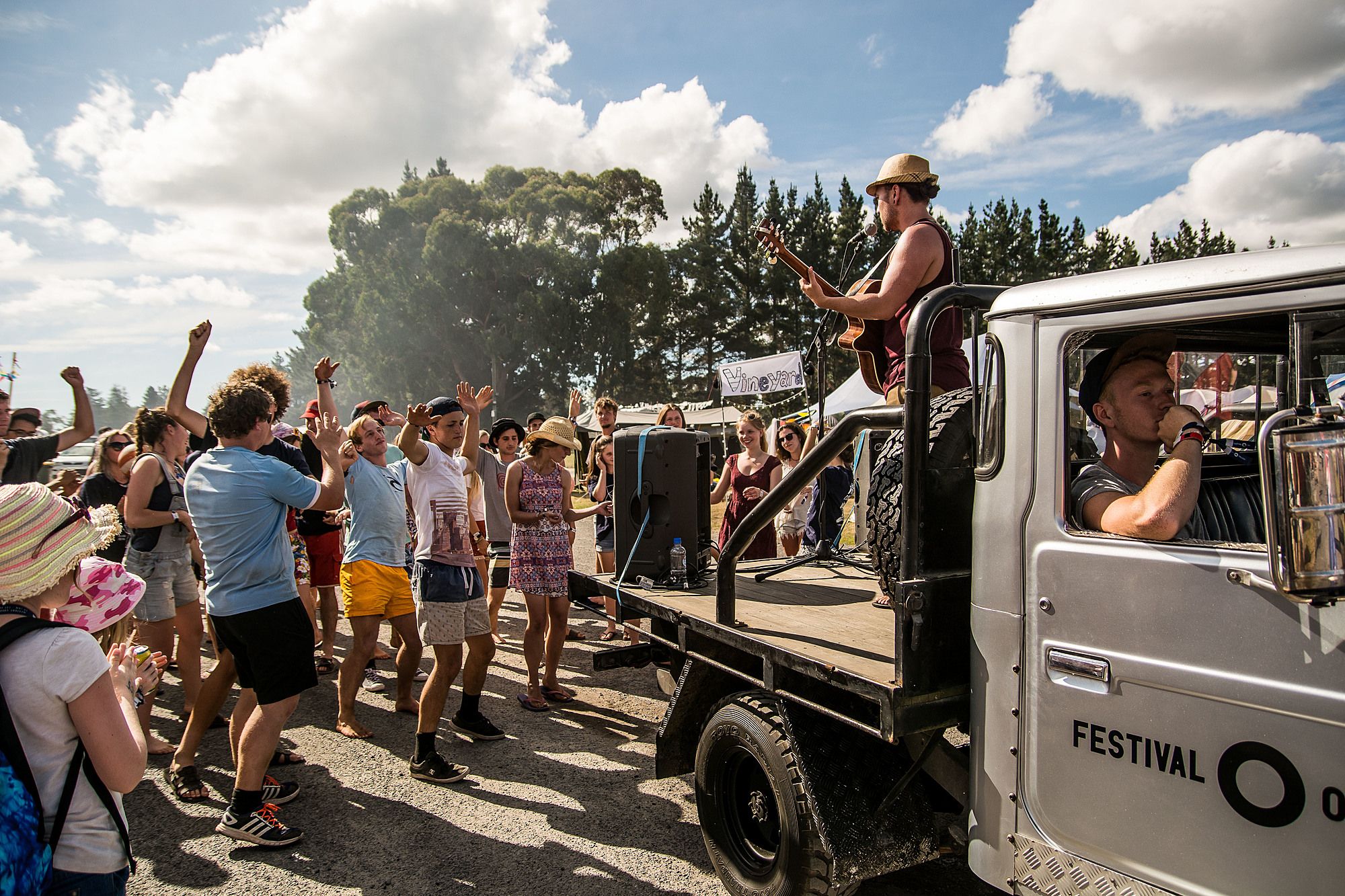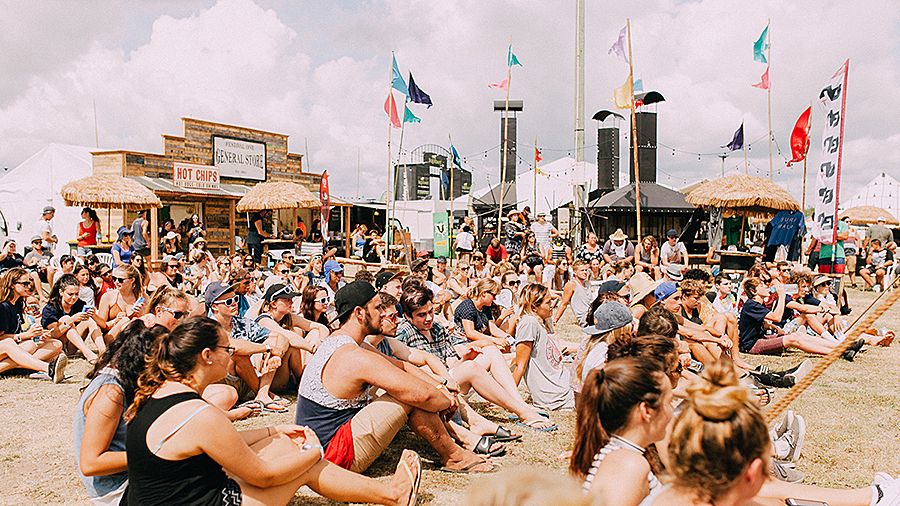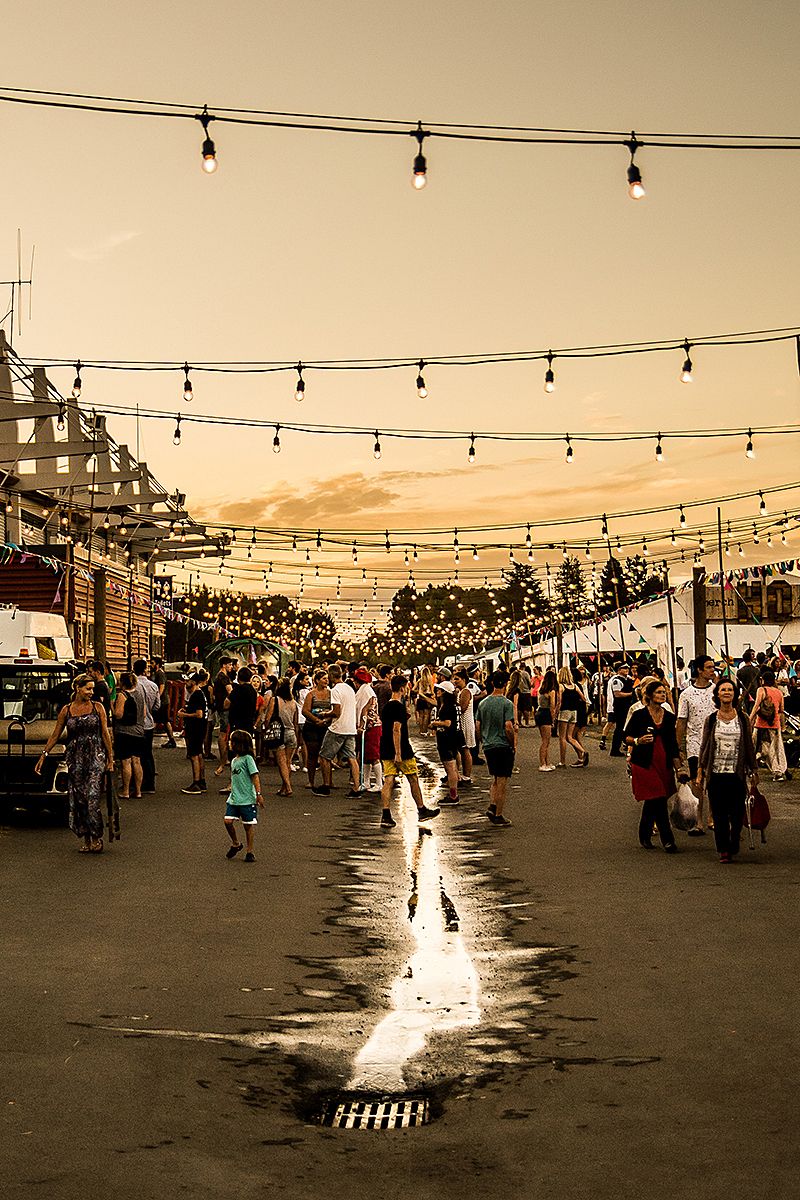The Festival One model: Can you ‘curate’ a community?
“In the first instance, it’s a community,” says Festival One Executive Director Graham Burt. “We’re asking people to be participants and not consumers.”
The music festival, which ran on Auckland Anniversary weekend, billed itself as more than simply a “well-organised, pre-packaged programme of food and music”. Rather, the festival promised interaction and engagement, two trendy concepts that make fabulous webcopy but are challenging to deliver.
Festival One took two festivals as models: Parachute Music Festival, its similarly Christian-themed predecessor at Mystery Creek on Anniversary Weekend, and Coachella, an American festival that’s met outstanding success in recent years. From Parachute, Festival One aimed to retain the values of a Christian music festival, while from Coachella it borrowed the emphasis on curating a creative community experience.
Parachute was discontinued in 2014 due to an inability to stay afloat in an “events-saturated market.” Despite the similar location and target demographic, Festival One isn’t a re-launch; it’s a separate entity and run by different people. Organisers believe their points of difference from Parachute, including the community focus and smaller size, will enable them to succeed.
In a marketing move that nods to craft beer breweries, Festival One sought to create a sense of connection, quality and intimacy through keeping things small. Official numbers weren’t released, but casual estimates average around 4,000 people, compared to the 20,000 that Parachute drew in its heyday. “We’re not after an endless drive for numbers, we’re not a quantity event,” Burt said.
The ‘community’ aims of the festival proved a strong pull for artists. Dietrich Soakai, one of the South Auckland Poets Collective, said that when the Festival initially approached them, he was apprehensive: “At the time I was kind of over doing festivals. Then Burt talked about the intention behind the festival as something that was really about community… creating spaces for people to interact and engage and share stories and share community.”
Indeed, the festival put significant money and effort into turning communal areas into spaces that invited people to linger together. Wooden birds and cloud sculptures hung inside the rafters of the dining marquees, while an array of games like giant jenga and giant scrabble were scattered on the adjacent lawn. Given that financial pressure made Parachute fold, could the energy – and money – required to curate community cause Festival One to compromise its effectiveness as an actual music festival?
Some attendees missed having a big-name international band: “Everyone liked Switchfoot [2015 headliners]; they should get them back.” It’s worth noting, though, that the same people criticising the gap came back, often dragging mates along as well.
Featuring mostly New Zealand artists cut costs, but it enhanced the laid-back atmosphere. People didn’t have to rush from one major act to another. Instead, the festival invited attendees to wander from stage to stage, sampling a little of this and that. There were no acts across mealtimes, which further slowed the pace of the festival. Often the bands didn’t have albums, and in some cases it was their first live show, emphasising the ephemerality of the experience. Presenting unknown bands allowed the attendees to cast themselves in the role of music critic or agent, ‘discovering’ new acts. This more active listening, combined with the fragility of the experience, promoted engagement.
The South Auckland Poets Collective are a group of spoken word poets, and they featured strongly in the festival, with two workshops, a performance, and an open mic night. Their particular performance artform embodies the engagement that was so important to the festival. Collective member Esther Grace said of spoken word poetry, “It’s something that everyone can relate to. You watch music and it’s inspiring and we all have connection to it; you go away and want to do something but not everyone are singers. Through poetry there’s still a tool for us to use our voices.”
Indeed there were a diverse range of voices represented at Festival One: there were prams, wheelchairs, guide dogs, greying hair, mohawks, and pastel earmuffs for tots. A group of young people had come down for the day for a birthday party, while on the other end of the spectrum, Elaine, a mature woman, had decided to come for herself even though she had no teenagers. “[The vibe] is just perfect, very relaxed,” she said. “It [the festival] is working for a broader context.”
The community focus meant everyone - artists, organisers and attendees - were linked, said Jared Stevenson from The Latest Fallout. “I was hanging out [in the market] and completely random people were just coming up to me and talking to me.” Festival attendees mentioned they enjoyed being close to the artists, especially at the market stage, located in the centre of a ‘village’ of food vendors, dining marquees, pop-up stalls, and a main thoroughfare strung with lightbulbs.
The festival’s commitment to an ideal of community went beyond the attendee experience. “All the bands and artists are treated as equally as possible,” says Burt. “There is no VIP area for the international acts. Now we have just one area for all crew and artists. They’ve got the potential for the lead singer of the headline band to be sitting eating lunch with the person who collects the rubbish. It’s exquisitely, beautifully egalitarian.” For Burt, this is directly linked to his faith, which underpins the whole ethos of the festival: “We are valuing each other because we are humans, not because of what we do, but because he [God] values each of us.”
"Now we have just one area for all crew and artists. They’ve got the potential for the lead singer of the headline band to be sitting eating lunch with the person who collects the rubbish. It’s exquisitely, beautifully egalitarian.”
Though it might be expected that a religious group would pool resources in order to proselytize, this event seemed fairly in-house. While it was clear it was a Christian festival, it seemed to be reaching towards an audience who already shared that common starting point, rather than actively seeking new converts. Does a Christian festival have a head-start when it comes to creating a feeling of community? Burt alludes to this, saying “We’re all part of the one body of faith … we’re all together in one thing. And so we start from a family perspective.”
On the other hand, most music festivals are drawing on a common community in some form. A jazz festival draws people who have jazz as a common interest. A heavy metal festival draws people who have metal as a common interest. A Christian music festival draws people who share a common spiritual or faith background. Granted, an ideological commonality strikes closer to a person’s core than a merely aesthetic one (although some people defend their music with religious fervour!), so it’s not exactly a level playing field. Conversely, though, the more deeply a belief is held, the greater the potential for schism as differences in opinion become linked to the foundational elements of a person’s worldview. Many Western Christians consider music a divisive issue, so drawing a Christian community together around music may not be as simple as it appears on the surface.
Similar questions could be asked of the festival’s strong volunteer and sponsor support base. The festival was staffed by hundreds of volunteer crew, seemingly at a higher ratio than other festivals, and businesses and organisations like Sanitarium (owned by Seventh Day Adventists) and Life FM (a Christian radio station) played a prominent role. Perhaps unsurprisingly for a festival claiming to be motivated by community, a number of volunteers were involved because their friends had asked them. Others seemed motivated by the needs of the cause, saying simply that the festival had needed more people – leaving implicit with a shrug that they’d felt they should step into the breach.
Does affiliating a music festival with an established, organised religion offer avenues of support not available to mainstream festivals? When combining an event with an ideological motivation, will you have a stronger volunteer response? An affirmative answer seems obvious, although circumscribed by the limitations mentioned above – when you peel back the layers, Christianity is far from a single homogenous entity – and must also be considered alongside the restrictions that come with religious affiliation. Many music festivals have drink sponsors, but alcoholic beverages weren’t permitted at Festival One, cutting out possible sources of both revenue and sponsorship.
The strong representation of NZ artists, including a large contingent of relatively unknown bands, also had implications for the festival’s bottom line. The festival paid emerging and unknown bands on a scale similar to what they might receive at a live gig. Often, this was barely enough to cover bands’ costs.
Exposure isn’t exactly a universally recognized currency.
The pay a band can command isn’t directly linked to their performance quality. Instead, a band’s ‘profile’ defines how much help the promoter thinks the band will be in selling tickets. The promoter pays accordingly. The less profile you have, the more of your payment can be reflected in ‘exposure’, or the profile the band gains by doing the gig.
Playing for exposure isn’t entirely without benefit to artists, especially emerging groups without albums to hawk. “Other people get to see us, so they might look us up, and then see that we’ve got an online purchase going,” said singer-songwriter Amanda Maara. “It [the festival] just helps with like Facebook… it exposes you to a large group of people.” Burt emphasized that the festival sees payment as only one part of the way they support their artists: “That the fee is not the whole point, but part of a much larger package, is completely understood by them.” These kinds of reactions are symptomatic of a climate in which artists are supposed to feel grateful for even getting a gig, regardless of how it is paid.
Exposure isn’t exactly a universally recognized currency. The trend to pay artists in proportion to their profile, visible throughout the live music scene, has problematic flow-on effects for the music community. If bands provide quality music at under professional rates for the sake of exposure and developing credibility, they devalue their music and make it harder for other bands, not to mention their own anticipated future selves, to get sustainable paid work.
Making music, an ephemeral art of subjective value, is famously fraught under capitalism. Added to that are the complications of a digital age that fosters the attitude that content ought to be free. In a refusal to play by the rules capitalism imposes, groups of people get together and make something because they believe it’s important and their community is a better place for it, and pay themselves and each other what they can (including projects like the Punch). Further left on the continuum are projects like the local Chronophonium music festival, an indie fest that actively works against ‘capitalist conditioning’ by promoting a system based on giving and community rather than monetary value. As a non-profit endeavour, they are upfront about their expectation that everyone will contribute, whether by paying for a ticket, volunteering as crew, or playing at the festival.
Festival One’s focus on community participation and volunteer involvement has some resonances with these attempts to provide an alternate model for making art. Burt suggests “We pay as much as we are able…. We also go out of our way to both support local talent and to treat all bands equally and well.” One band enjoyed participating so much that they declined payment after the event. A rejection of capitalist values is attractive and significant, but it doesn’t change the fact we still have to pay our bills. To some extent or other, we have to subsist in this society, making community projects driven by largely poorly-paid involvement unsustainable.
To continue under its current model, Festival One will have to continue to find low profile bands who are willing to be compensated as such. In this regard, the festival participates in a broken system, potentially contributing to the problem.
Is it too unrealistic to hope that a festival that innovated in so many areas regarding community and experience could also challenge the established but unhealthy patterns of payment for musicians? If the festival is selling an experience, rather than simply the bands, surely there’s the possibility of restructuring the remuneration model so that it’s less directly affected by the perceived ‘profile’ of the band? After all, they’re equally contributing to the total package experience that is the drawcard for ticket sales.
In terms of simply creating a participatory community, Festival One succeeded magnificently. Decisions about the size, layout, line-up, and schedule all contributed to the laid-back, inclusive community vibe.
That doesn’t necessarily make the model sustainable. It required a huge amount of volunteer support and a roster of artists willing to be paid only in proportion to their profile, and as is all too common with creative projects, the idealism of creating something together failed to adequately address the needs of artists.
Can we create forums for communities to engage with music and art while still paying artists a fair wage? Can a creative community be effectively fostered, and paid for, in twenty-first century New Zealand? Despite succeeding on its own terms, Festival One raises more questions than it answers.




